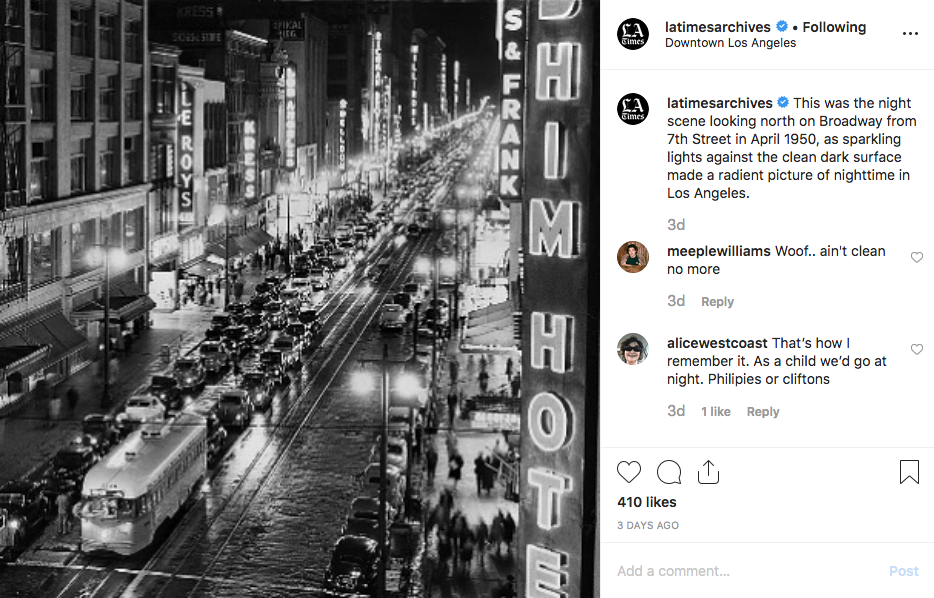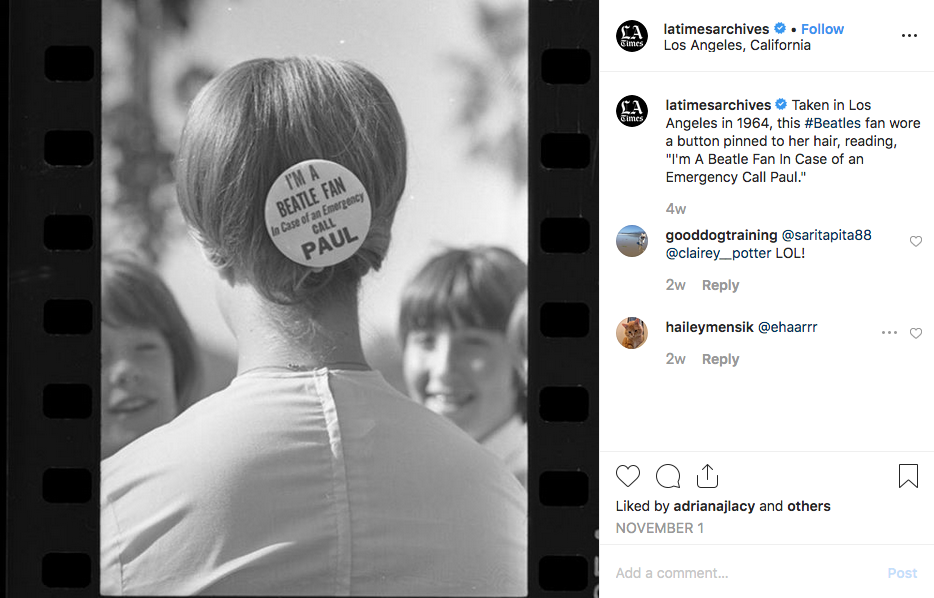"I’m trying to give colour to old stories," said Adriana Lacy, audience engagement editor, LA Times.
The US publisher is the largest and one of the oldest local newspapers in the country. To attract the audiences of tomorrow, it set up a new @latimesarchives Instagram account in October 2019, which posts archived black-and-white photos through the ages of the organisation.
Every day, it posts a new throwback photo, dating as far back as 1921 with a picture of Santa Monica Boulevard. More recent images include Blue Line cars on Washington Boulevard from 1992 and a series of images of Thanksgiving holiday.

In the space of two months, the account has amassed nearly 5,000 followers. Though by the time it made a public splash about its existence, there were around 200 followers and 25 posts already. Lacy underlined the importance of audiences not landing on an empty account to strike a strong first impression and gain crucial momentum.
"We noticed readers spend lots of time on the account. They like and comment on the first posts that are two or three weeks old," she said.
They want the experience of being able to track back and catch up, as well as having a variety of posts to engage with. This is what Instagram users are on the platform for after all, she added, but it also demonstrates the timelessness of human stories.

The publisher is sourcing images both through its own in-house digitised collection of photos and the estimated four million images on the UCLA (University of California, Los Angeles) website. Currently, two or three reporters work daily on selecting images, writing captions and posting to the account.
The objective is to build habits and familiarity with the brand on a platform which is seen as a key gateway to the 18-24-year-old target audience.
That connection, however, is not measured with referral traffic to the main website, though the team does have one eye on building up visits to its paywall and archived images are also the focus for some editorial articles on the website.
"It’s vital that we are using platforms for what they are meant to be used for,” Lacy said. "Linking out is not really something people do on Instagram."
Instead, Instagram users like to remain on the platform. The follower count is a good indicator of whether they are getting the desired traction, but virality is more important: shares, likes and, crucially, comments. Engagement with Instagram Stories is also one of the main signs that the publisher has made a personal connection, but this can be hard to track as they quickly expire.
For now, the LA Times is focused on building up its follower count and a relationship with young news audiences, with an almost bottomless pit of archival content.
"For the longest time, the idea of journalism is that it’s a one-way street — for me, engagement is about making it a two-way street," Lacy concluded.
Free daily newsletter
If you like our news and feature articles, you can sign up to receive our free daily (Mon-Fri) email newsletter (mobile friendly).
Related articles
- 10 creative ways to interview celebrities and experts
- How NRK uses AI-generated summaries to boost younger readers’ engagement
- How do news leaders define success in their newsroom?
- Seán Wood, CEO of Positive News, on fighting news avoidance
- Trust is not a "useless metric" - we just need to understand it better










